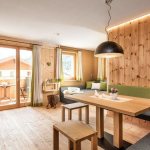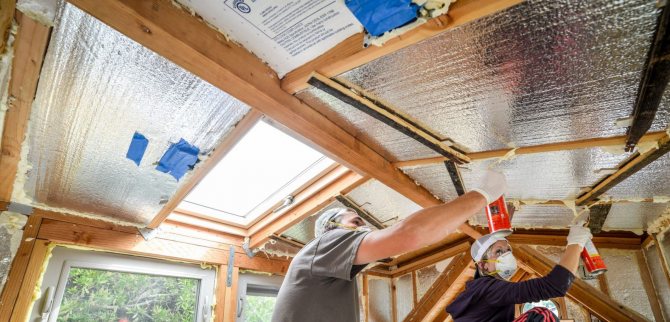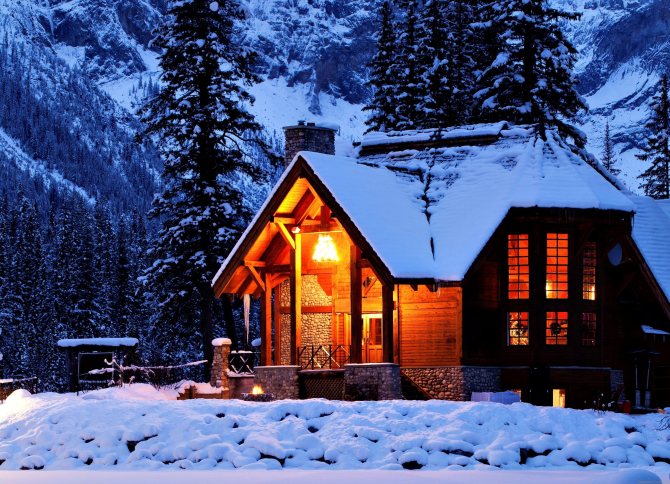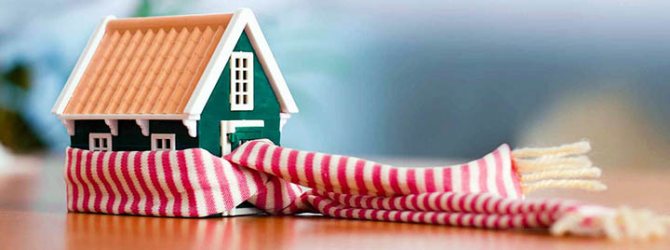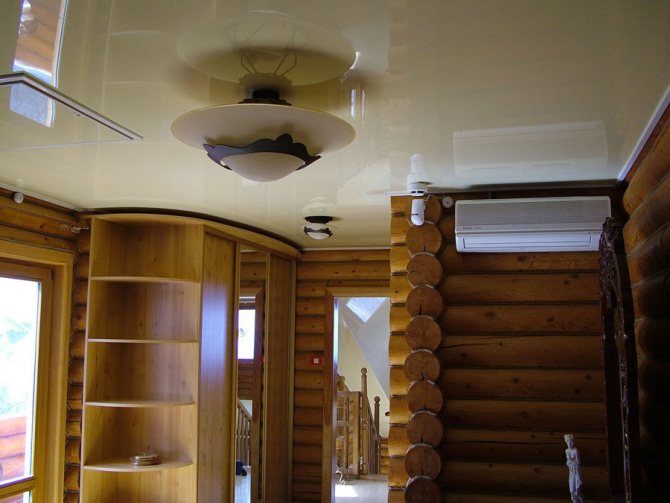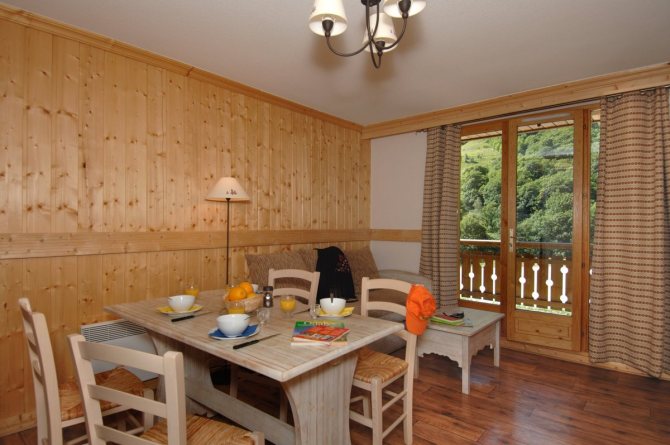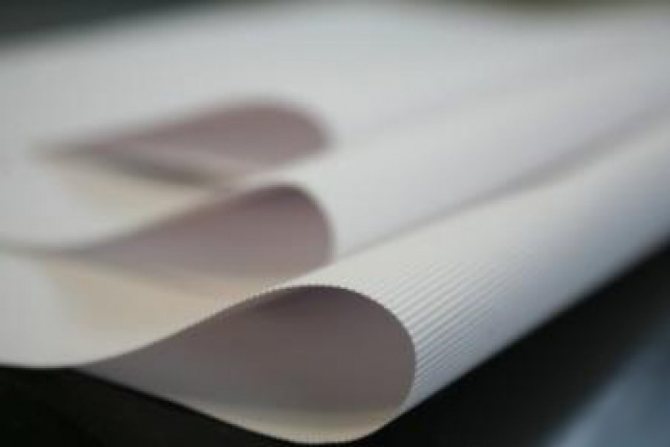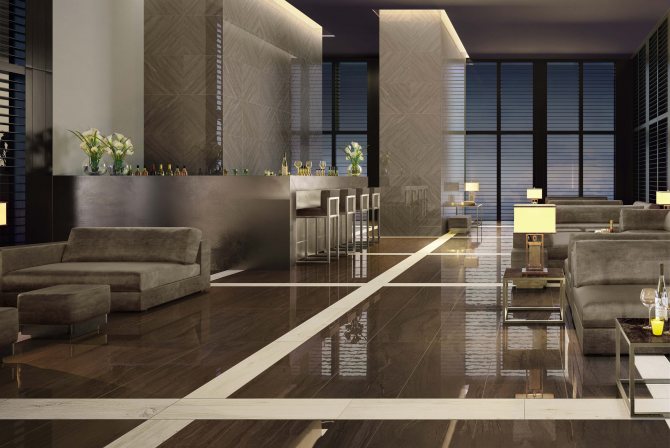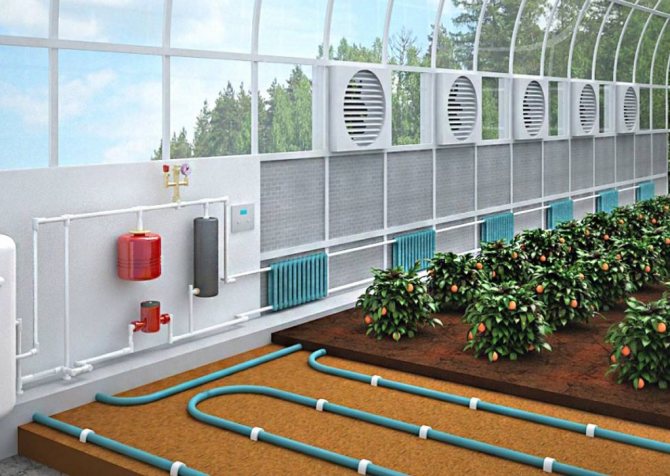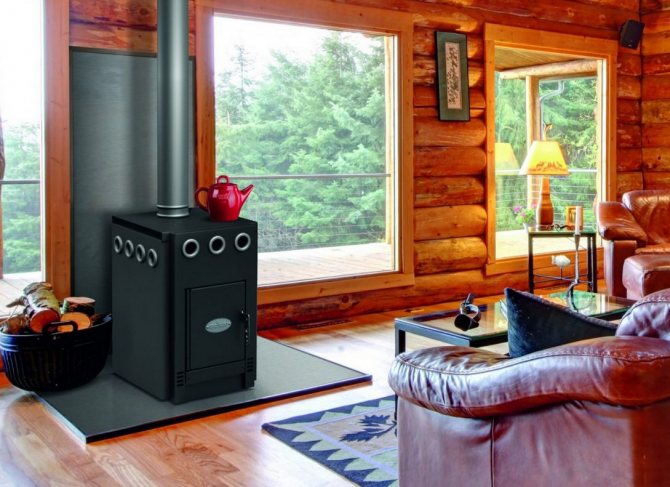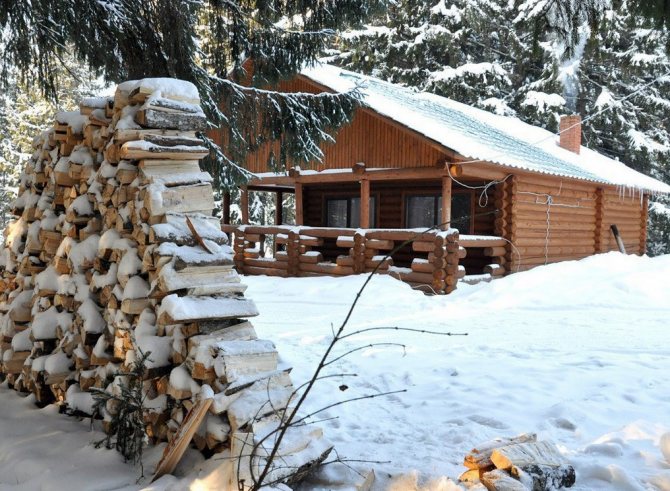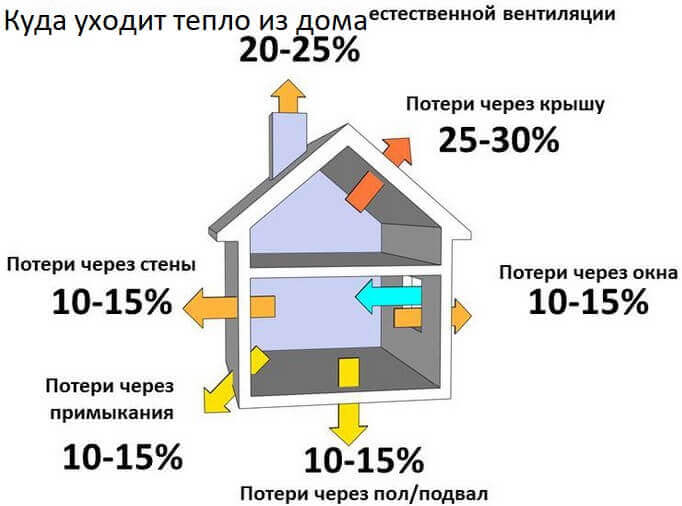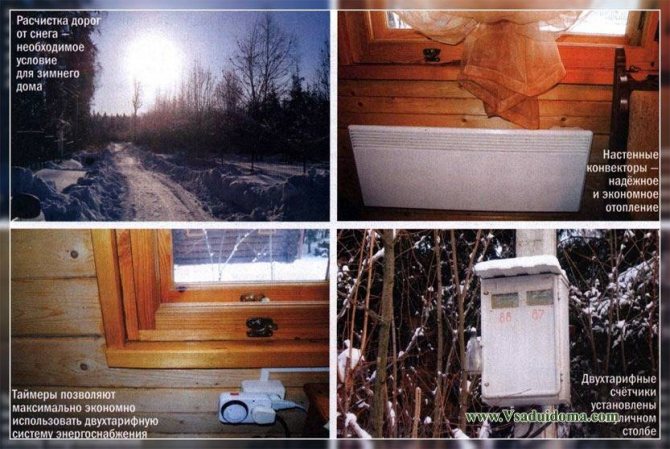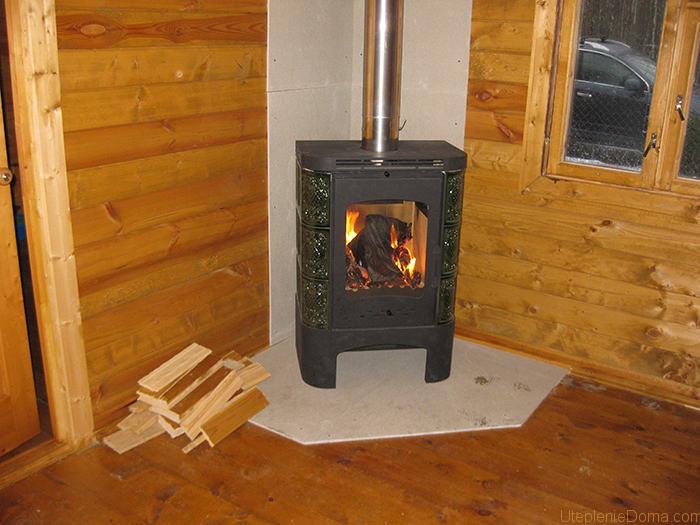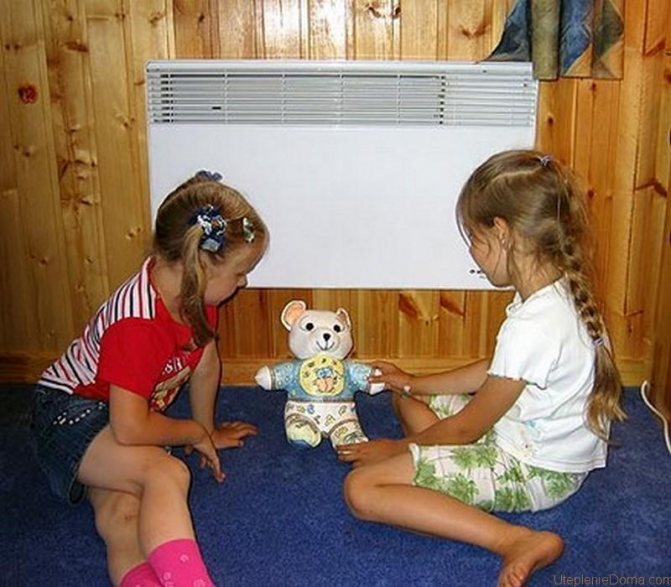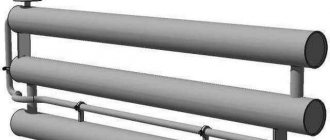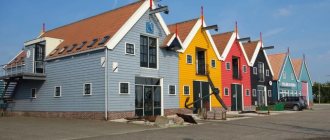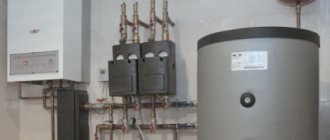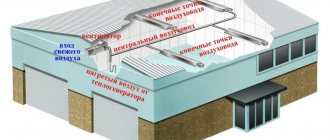The popularity of stretch ceilings is growing every year. This is due to the possibility of quick assembly without dust and a long service life. But this type of decoration is used, as a rule, in city houses and apartments, where a constant temperature regime is maintained and people are there every day. Therefore, it is not clear how such a coating will behave in buildings of seasonal operation, where heating is either not provided, or is switched on periodically. Let's try to understand this issue. To find out whether it is possible to make a stretch ceiling in an unheated suburban area, consider the properties of this coating.
Types of materials used
Distinguish between vinyl and fabric. It is these materials that the manufacturers of stretch ceilings offer today and the differences between them are very significant.
Vinyl canvas Is a thin PVC film with a thickness of 0.15-0.37 mm, produced in rolls with a width of 1.3 to 5 meters. The main qualities of vinyl ceilings:
- harmless to humans and the environment;
- fire safety - PVC film does not support combustion, the material melts, but does not ignite;
- biological resistance - mold does not form on the surface of the canvas;
- elasticity - when heated, vinyl can stretch up to 220%;
- strength - withstands loads up to 17 MPa;
- water resistance - does not allow moisture to pass through.
Manufacturers offer glossy, matte and satin fabrics with a huge number of shades. Vinyl film is distinguished by bright colors, allows you to combine materials and apply photo prints, which provides endless possibilities for use in different interior styles.
Due to its strength and water resistance, PVC ceiling can hold up to 100 liters of liquid for a long time in the event of a flooding or roof leak. In the future, the water is easily drained and the web is re-tensioned. For rooms with high humidity, PVC is the most suitable option.
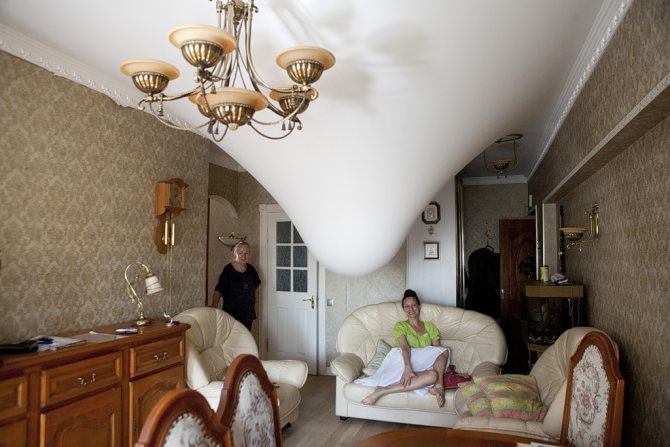
Among the shortcomings, it is worth noting air tightness. In a room with insufficient ventilation, the "greenhouse effect" appears - humidity increases and becomes stuffy. It is also easy to damage the stretched canvas with a sharp object. Even a "shot" with a cork of champagne can lead to dire consequences. Therefore, the film requires a particularly careful attitude.
Fabric ceiling - is a synthetic polyester fabric impregnated with polyurethane, 0.12 mm thick, sold in rolls from 3.1 to 5.1 m wide. Main material properties:
- environmental friendliness - does not contain and does not emit harmful chemical compounds, thanks to special perforation, the polyester ceiling is able to "breathe", which is important for creating a comfortable microclimate in the room;
- thermal stability - the material can withstand a wide range of temperatures (from –40 ° C to +80 ° C) without losing its properties;
- relative elasticity - it can stretch up to 120%, but when heated, unlike vinyl, it shrinks;
- fire safety - thanks to special impregnations, the textile fabric does not ignite and does not support combustion;
- high strength - accidental damage to polyester is unlikely;
- quick installation - no heat gun is required;
- easy care - the antiseptic coating of the canvas eliminates the accumulation of dust on the surface;
- water permeability - polyester is "not friendly" with water and is not suitable for wet rooms;
- the possibility of multiple dyeing - textiles can be painted with acrylic paints, but no more than 5 times to avoid sagging.
Factors to consider first
An economical owner, deciding how to heat a summer cottage without gas in winter, focuses mainly on the expected result and his budget, and not on the opinion of others. If there is no limitation in funds, then it makes sense to do everything thoroughly and with multiple reserves. Under certain budget limits, it is reasonable to choose how to heat the dacha more economically and efficiently.
If you take the usual stove heating, its advantage is the availability and cheapness of wood raw materials. But in the long run, this means spending a lot of personal time on it. Considering how to heat a summer cottage cheaply in winter, it is worth deciding on three questions. This can be said to be the comfort temperature equation. Each of its components is important in its own way.
Heat loss at home
It is clear that the insulated capital structure is slowly cooling down. Sealed doors and windows keep every degree of warmth. A light panel house, a construction trailer, and brick buildings with thin walls, on the contrary, quickly lose it. It follows from this that heating a summer cottage in winter implies high heat losses. In this case, it is more reasonable to organize local comfort points than to warm the street.
Heated area
This factor affects the initial warm-up time for the entire room. Everything inside - air, furniture, partitions - will take heat from the heating source. You can spend 6-8 hours to warm up a house of 50 m2. Next, you need to maintain a comfortable temperature. It can be very conditionally considered that for every 10 sq. meters need 1 kW of thermal energy. For the exact value, you need to take into account the coefficient of thermal conductivity of the ceiling and walls, the difference between the internal and external temperatures, the type of heating.
For houses larger than 40 m2, a radiator heating system is suitable. It will allow you to quickly and evenly distribute heat to all rooms. Since you need a lot of fuel, you should give preference to the most accessible type in the area. Unless, of course, the budget is limited and the issue of cost matters. Separately, it is worth considering the possibility of heating the summer cottage with electricity in winter.
The amount of heat available
Each heating system has a power limit, from which the heating area is determined. Also in relation to electricity, certain limits are imposed. They are due to the power of the power transformer and the state of the electrical network. Limited energy resources, or their extremely high price, significantly reduce the number of acceptable solutions. In this case, you can limit the heated area, the room temperature, or reduce the time spent in the country.
Frost resistance of film and fabric canvases
The most important difference between a fabric ceiling and PVC is its ability to withstand prolonged exposure to low temperatures.
Most vinyl materials on the market are limited to 0 ° C. For fabrics, the lower limit of frost resistance is –40 ° C. The difference is significant.
Recently, manufacturers have learned to make a film sheet with the addition of latex, which is not afraid of a drop in air temperature to –30 ° C. For middle latitudes, this margin of safety is quite enough; as a rule, there is no such cold in a summer residence. However, the cost of this material is several times more expensive.
How to make a non-ventilated facade in winter
The main problem in this house insulation system is the impossibility for plaster and glue to dry out in high humidity and at low temperatures. If you still plan to use this method, you should consider these options:
- Building mixtures are not designed to work at temperatures below 5Co, but if you use anti-freeze additives, the mortar can dry at temperatures down to -15Co. It is important to make a reservation right away - additives have a high cost, and a lot of material will have to be spent on all the walls of the house.In addition, additives solve the temperature issue, but excessive moisture will continue to work against a high-quality coating;
- Creates a thermal outline for the facade. This option is more labor-intensive, but creating a perimeter with a comfortable temperature and humidity level, you can easily continue to work on the insulation of the house.
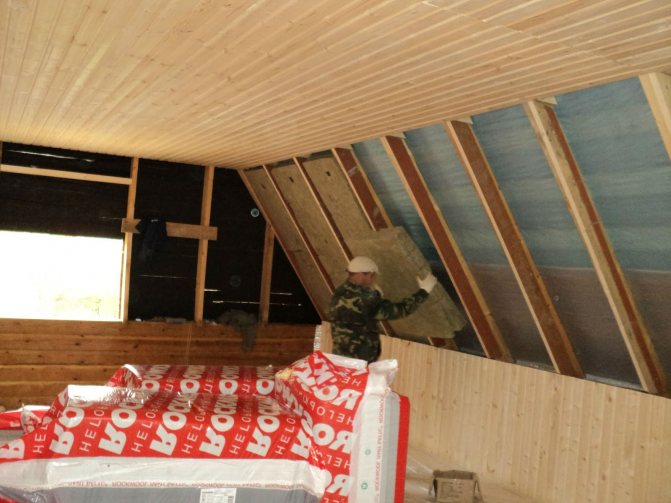

As soon as the insulation of the facade is completed, the very next day a different microclimate will be noticeable in the house.
How stretch ceilings behave in winter without heating
If you plan to install a stretch ceiling in an unheated room, the choice of material must be approached most responsibly. It all depends on the climatic conditions, or rather, on the temperature regime in the room in the winter. Summer country house or summer cottage in cold weather, as a rule, is not heated. In any case, most owners prefer to spend the winter in warm apartments.
The best canvas for the ceiling in a cold house is synthetic fabric, since polyester does not harden in subzero temperatures, while PVC film becomes brittle and brittle.
Vinyl stretch ceiling in the cold will crack, as the tension of the membrane increases to the limit. The process of destruction is accelerated by the sharp changes in temperature that are characteristic of our regions.
The fabric has one more advantage - it is not afraid of hot weather. And the tension of the elastic film weakens when heated, and even sagging may appear. Of course, when the ceiling cools down, it regains its original appearance, but at the same time additional operational loads arise that affect the service life of the coating. Of course, it makes no sense to constantly turn on the air conditioner in an empty country house, as well as to heat it in winter. In addition, a suburban building in the cold can become a refuge for mice, and PVC film - an object of their close attention.
How to heat a summer cottage with gas in winter?
If the dacha is used only for intermittent stays, it may not be worth making an expensive connection to the main gas pipeline. However, it is nevertheless possible to heat the cottage with gas. Gas in cylinders will help to solve the question of how to quickly heat the cottage in winter. It is quite possible to bring the cylinder with you; it is not necessary to equip a place for its storage in the country. And thermal gas equipment is much more economical than similar electrical equipment with comparable efficiency parameters. So, for example, a gas heat gun can heat the air in a room in a matter of minutes, and will consume very little gas at the same time. All kinds of gas convectors are also quite competitive in terms of heating a country house.
The best way to heat a summer cottage in winter is not an easy question. Since, along with the issue of savings, there is also the issue of the efficiency of heating equipment. Special requirements for the speed of heating the premises, automation of the process and the final price affect the final choice of owners of suburban real estate. And only a careful calculation of all conditions of use will help to make the right choice in favor of one or another method of heating a summer cottage in winter.
Pros and cons of stretch ceilings in a cold room
From the above, the conclusion suggests itself that at subzero temperatures it is better to use synthetic fabric. But not everything is so simple.
- Firstly, there is an alternative in the form of expensive special films that feel great in houses without heating. They do not deteriorate from frost and temperature extremes, retaining their properties for many years. True, not everyone can afford such a pleasure. In addition, the choice of colors and textures is much more modest compared to conventional film, and the maximum width of such material does not yet exceed 3 m.
- Secondly, with all the advantages, fabric ceilings are susceptible to the formation of fungus. And if the roof leaks, they will not save you from flooding.Another disadvantage: in high dampness in a cold room, synthetic fabrics are saturated with moisture. All this leads to irreparable damage to the material, which will have to be replaced. In addition, if it is necessary to dismantle the ceiling, for example, to gain access to communications, it is very problematic to install the canvas back. The fact is that after stretching, the excess fabric is cut off and during re-installation there will be practically nothing to grab onto. There are exceptions, though.
- Thirdly, some unheated rooms are not cooled to subzero temperatures even in unusually harsh winters. Balconies and loggias that are soundly insulated outside can be passively heated due to adjacent warm rooms. Therefore, PVC film is often used as a ceiling covering.
Thus, in order to make the right choice, you need to carefully study the operating conditions of a particular room, weigh the pros and cons, only after that you can determine the most suitable material.
Long-lasting "heating pads"
These heaters heat up and release heat gradually. They are small and mobile.
Oil radiator
It heats up slowly: first the oil, then the body, only then the ambient air. Old models work on the principle of natural convection - warm air flows upward by gravity. To warm up next to such a mastodon, you have to sit very close to him. Modern options with a fan give off heat faster and more actively due to forced air circulation... The built-in thermostat will allow you to select the desired temperature, which will be maintained automatically.
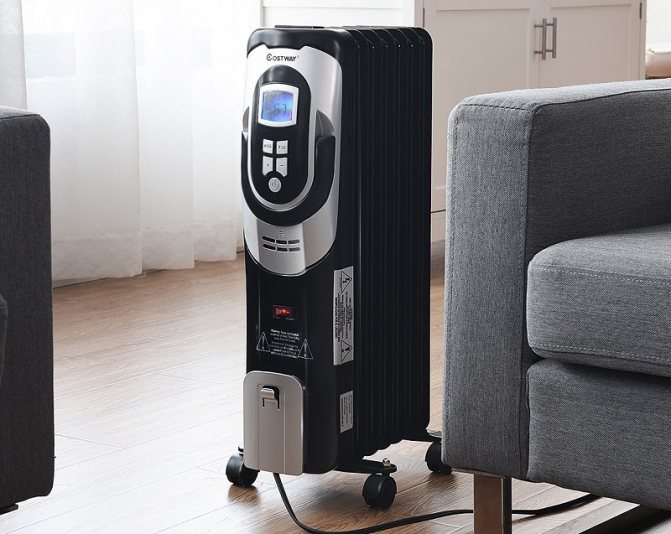

The oil heater can be positioned very close to your location
The device is "gluttonous", so it is better to use it as additional heating, for example, to thaw at the fan heater, and then turn on the oil. Power is selected on the principle of 1 kW per 10 m2.
Infrared heater
Infrared (IR) heaters do not heat air, but objects. Any model is suitable for giving:
- by the type of fluorescent lamp;
- screen;
- IR on a tripod;
- the film is a mat as a warm floor.
In the event of a power outage, there are even miniature gas IRs.


It is so cozy in the rays of an infrared heater that you can do without a blanket
I have been using this 600 W heater in my dacha since 2006. It hangs over the bed, gives an unobtrusive, soft warmth, as if you are lying under the sun, but without light.
Sfinkscat https://otzovik.com/review_2175388.html
Video: how an IR gas heater works
Convectors
Like oil coolers, these devices also work on the principle of natural or forced convection. The air is heated by a metal or ceramic heating element. Hot air begins to flow in about 1–2 minutes. Models with electronic thermostat do not click during operation and allow automatic on-off operation. Convection heating is becoming popular as the main and inexpensive source of heat in city apartments and private houses. Alas, users often write that the room keeps warm just as long as the device works.
Video: the principle of operation of the convector
Is it worth making a stretch ceiling in the country
Vinyl film is not intended for use in freezing rooms. If you periodically heat the cottage in winter, it may be possible to avoid critical hypothermia. But at the same time, the unstable temperature in the room will affect the condition of the stretch ceiling. From strong cooling, the PVC film will narrow, and when the summer cottage warms up, on the contrary, it will stretch. As a result, the canvas, even if it does not tear, will sag in 2-3 seasons, partially losing its elasticity.
But this is not the biggest problem. In winter, when the ground freezes over and the neighborhoods are swept by snow, field mice find shelter in the country house.These seasonal "owners" in the cold gnaw everything that comes across. And if at least one of them crawls from the attic into the space between the ceiling, then without hesitation, it will turn the PVC cloth into a sieve. You should not rely on poisoning with an irregular visit to the dacha. One day, some circumstances will prevent you from getting there on time, and hungry mice will have time to deal with the ceiling in 1-2 days.
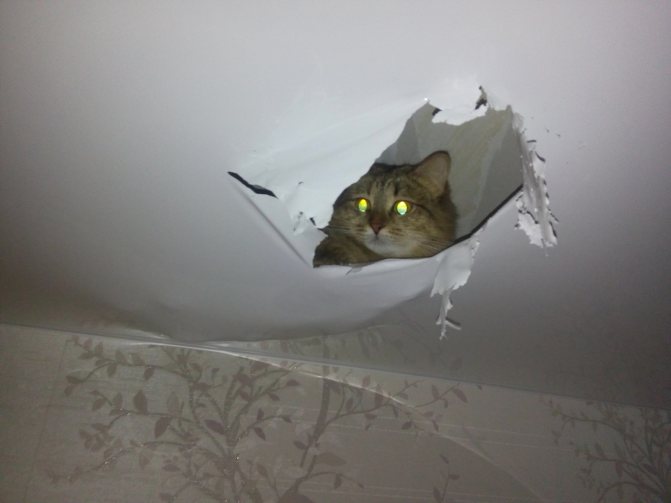

Perhaps the temperature problem is solved by a frost-resistant fabric cloth, but in a cold house in winter it will quickly become damp and almost inevitably covered with mold, which is almost impossible to wash later. So stretch ceilings in the country, which will not be heated in winter, are not at all obligatory, if not useless. Most owners will be content with more modest finishes. Consider the existing options:
- Plastic lining or panels... For a summer residence, this is the cheapest and most convenient way to finish. The panels can be washed, they are too tough for mice, they are not afraid of frost at all, and colors - as much as you like. Installation is so simple that any home craftsman can easily handle it.
- Wooden lining... In terms of costs, this option is not cheaper than tension structures, and installation will take a little more time. But if you do it yourself, the savings will be significant. Such a ceiling can be opened with varnish, preserving the natural appearance of the wood, or painted in your favorite color. Lining is a very clean, practical and personable way of finishing.
- Plywood... An inexpensive and original option, especially if you have wooden furniture. At the same time, the external similarity of the surface texture with wood will create a single interior of the room. Various front finishes allow you to choose the right color. If necessary, you can paint the surface or treat it with a stain of the desired shade. The material is easy to handle and install, even without an assistant.
- Foam tiles... Also an inexpensive and quick way to finish a country ceiling. The choice of such tiles, both in size and pattern, is very wide. And if there is no suitable shade on sale, the foam is easily painted in the desired color. Ceiling tiles are glued without any preliminary preparation. It is better if the foam is laminated. Dirt does not stick on such a surface, and it is very easy to clean. Mice will not eat it, because with such a finish, no space between the ceilings is formed, the tiles are glued directly to the ceiling.
- Plain whitewash... Perhaps the easiest way to tidy up the ceilings. Even a person who does not have the skills of a painter can cope with the work. The bactericidal properties of lime protect the ceiling from mold, however, the whitewashing process cannot be called clean - splashes of the solution inevitably fall on the walls, furniture and floors and it is not easy to remove them later. Therefore, all surfaces are carefully covered with foil before the procedure. The disadvantages of this finishing method include the need to periodically whitewash the ceiling, since over time, cracks appear on the surface and lime begins to fall off in some areas.
So, we tried to briefly describe the main options for finishing ceilings in a country house or in a country house, the advantages and disadvantages of each method, but the choice, as always, is for the owner.
Portal users tell how to prepare a summer cottage for a weekend getaway in winter. Traditionally, it is believed that the dacha is intended only for summer vacations, and with the arrival of cold weather, the house must be mothballed until spring. But the users of the portal tell how to prepare a summer cottage for a weekend getaway in winter.
Traditionally, it is believed that the dacha is intended only for summer vacations, and with the arrival of cold weather, the house must be mothballed until spring. But as the experience of FORUMHOUSE users shows, many continue to go to the dacha in winter, getting out there for the weekend.And so that a trip for 2-3 days does not turn into a continuous headache, it is necessary to prepare in advance for the operation of the cottage at negative temperatures.
So, from this article you will learn:
- What features must be taken into account before starting the winter operation of the cottage.
- Why it needs to be insulated.
- Than to heat in winter.
- How to install a winter water supply system.
Features of the winter operation of the cottage
To understand what the requirements are for the winter operation of a summer cottage, you need to understand the concept of "comfortable living conditions". Electricity, heat and water are the three pillars of a comfortable life in any country cottage. The same applies to the dacha, with the amendment that the house will not be operated regularly, but on short visits. Those. in winter, the cottage may freeze, and upon arriving at the site, the building will have to be quickly put into operation.
Therefore, special requirements are imposed on the heating and water supply system of the dacha. We have already told you how to prepare the heating system of a country house for the heating season. If a full-fledged heating system is installed in the country house, filled with water, and not an anti-freezing coolant, then in case of freezing, heating pipes and radiators can break.
There is simply no time to fiddle with draining and pouring water, arriving at the dacha for the weekend. Hence: the heating system of the summer cottage should be simple, "frost-resistant" and quickly warm up the premises. The same is with the water supply system. The water remaining in the pipes, taps, siphons, cisterns, water purification filters, the knee of the toilet bowl, when the dacha goes into minus, will freeze and rupture the plumbing.
One of the ways out of this situation may be to constantly maintain a plus temperature (+ 5-7 ° C) at the dacha. For this, infrared heaters or convectors are mounted (as an option), and the thermostat is set to maintain a minimum temperature.
FORUMHOUSE user
I use electric convectors programmed for every day of the week and every hour of the day. On weekdays they are set at + 10 ° C, on Friday they are switched on at + 20 ° C.
FORUMHOUSE User
I go to the dacha all year round. While I am away, the convectors maintain + 5 - + 7 ° C. thus, the dacha does not freeze. Upon arrival, I light up the stove, and before going to bed I put the electric convectors on the night mode.
This will allow, having arrived at the dacha, in a short time to raise the temperature level in the premises to an acceptable one, and not to defrost the house. But this approach has a minus - the volatility of the system. In the event of a power outage (and this is not uncommon), the dacha will go negative in cold weather.
The key to the successful introduction of a country house in winter is the simplicity of all its systems, sharpened for a quick start upon arrival at the site.
In addition to saving money, this will save the owner of the summer cottage from worrying about whether everything is fine with electrical equipment constantly connected to the network.
And so that coming to the dacha in winter does not turn into a game of survival, you need to worry in advance about preparing the building for frost.
The need for additional insulation of the cottage
With the word "dacha" in the head usually appears the image of a small wooden house (timber or frame). Such a structure is most often built for summer operation. Those. if insulation is done, then at a minimum. At the same time, it is overlooked that a poorly insulated structure is more difficult to heat than an energy efficient one, where all heat losses are minimized. Or, in other words, a closed heat-insulating loop has been erected.
This is a guarantee that we will not heat the street.
Of course, high-quality home insulation is a costly business. At the same time, many novice developers mistakenly believe that it is enough to insulate the walls to the required values of heat transfer resistance (this indicator depends on the region).However, heat loss goes not only through the walls, but also through the foundation, floor, ventilation, windows, doors, roof.
Therefore, we pay special attention to these places. We get rid of cracks (which is especially important for old cracked wooden frames). We provide a vestibule in advance to create a thermal buffer that cuts off the external cold air from the internal heated rooms at the time when the front door opens.
In the absence of a vestibule, as a temporary measure, you can hang a thick curtain or a piece of fabric over the front door from inside the house.
When insulating a country house, do not forget about the price / efficiency balance. Those. the insulation of all nodes must be balanced. Extra insulation of the walls is pointless if it blows from the windows, the roof leaks, and all the heat flies out. How you can insulate a house and an entrance area is described in detail in the articles: choosing a modern insulation and how to insulate a steel door with your own hands.
But the insulation of the cottage is the first step towards its winter operation. The second stage is the choice of a heating option for the house.
Winter heating for summer cottages
A quick exit of heating equipment to a given temperature regime is the first requirement for the heating system of a country house. This is important because upon arrival at the dacha (for example, on Friday evening), the user will have neither the time, nor the energy, nor the desire to engage in commissioning the heating system, chopping wood or burning the stove for a long time.
Moreover, massive brick stoves (for example, a Russian stove), accumulating heat well, have a large thermal inertia and, before they properly warm up the house, a certain time will pass, which simply does not exist at the weekend. Therefore, for a trip to the country house in winter, as mentioned above, we give preference to electric heaters (IR or convectors), metal stoves and their analogues or Dutch stoves, which is described in detail in the article “Solid fuel heating stoves. Types and characteristics ".
Evgeniy2011User of FORUMHOUSE
I often go to the dacha on weekends in winter. I would like to take a break from the city and breathe clean air. Summer cottage, made of logs, but insulated. Of course, the building freezes over in a week. I heat a room of 25 sq. m brick heating and cooking stove. A heat exchanger is inserted into the firebox. Heating system with natural circulation of non-freezing coolant, plus 3 batteries are installed under the windows.
The following parameters of this summer cottage heating system are interesting. Depending on the outside air temperature, the heating rate is 3-5 ° C / hour. The comfortable room temperature (up to + 25 ° C) is set approximately 12-20 hours after starting the system, until the walls, ceiling and furniture are heated. The stove has to be heated 1-2 times every 24 hours.
As you can see, the system has a large temporal inertia. Therefore, another approach to the country heating system is interesting.
Alexander_CUser of FORUMHOUSE
You can't get heat right away with a brick stove. At my dacha (frame house, insulated with 25 cm of glass wool), a heating system based on IR panels, supplemented by a convection fireplace, was installed. On weekdays, infrared heating, using a programmable thermostat, keeps the temperature in the house at + 5 ° C. By Friday evening, the thermostat gives a command to raise the temperature to + 20 ° C in the bedroom and + 15 ° C in the living room, and upon arrival at the dacha, I light up the fireplace stove.
As a result of such a scheme, at -15 ° C outside in 1-1.5 hours, it is possible to raise the temperature (on a total area of the dacha of 55 sq. M) from + 15 ° C to + 27 ° C.
It is also possible to assemble a system based on a GSM socket and a 1 kW IR ceiling heater. A few hours before arrival, we send SMS to the GSM-outlet, and the house will warm up in advance for arrival at the dacha.
Note that such systems are volatile. In the event of a power outage, an accident at a substation, if an uninterruptible power supply system is not installed in the house, arriving at the dacha, we risk, instead of rest, dealing with the elimination of the consequences of the accident.
Therefore, our users are guided by the principle: the simpler the heating system, the better.
WAAD FORUMHOUSE user
I have a dacha (frame of 90 sq. M.), Where I come in winter.I arranged a sauna in the house, in which I placed a 15 kW bath stove, made of good thick steel with cast-iron grates and with an elongated firebox, loading another 70 kg of stones from above. Moreover, in addition to its direct function, it helps me quickly warm up the house in cold weather.
It happens like this - upon arrival, the stove is first flooded. While the snow is being cleaned outside and other household chores are being done, after 15 minutes the temperature in the sauna is above zero, because a small room warms up quickly. After about 20 minutes you can rest in the room, because it's already warm in it. Then WAAD throws more wood into the stove, accelerating the temperature in the sauna to + 45-50 ° C, and turns on forced ventilation, which creates excessive pressure in the sauna, driving air into the room through the nozzle.
As a result, when the door is closed, warm air begins to flow into the living room through a special hatch on the other side, and the house warms up quickly.
WAAD
I physically feel this flow like a warm breeze. In 1-1.5 hours, the entire first floor warms up. In addition, I also installed a gas convector and now in winter I warm up the cottage about 1 hour to a comfortable temperature.
Features of the winter water supply system of the summer cottage
So, we have warmth, but a comfortable stay in the country is impossible without a reliable water supply system. We have already written above that the water left in the pipes, when frozen, will rupture them. The water must be drained, and this will have to be done every winter visit to the cottage.
To somewhat simplify your task, you can use this trick. For example, in order not to pump out water from the knee of the toilet bowl with a syringe, and then plug the hole with a sponge for washing cars, which will help avoid the spread of unpleasant odors from the septic tank, you can use the "old-fashioned" method. In case of frost down to -10 ° C, pour a concentrated solution of table salt into the knee (salt can be dissolved in hot water).
WAAD
If there is no danger of large frosts, it is enough to throw 2-3 tablespoons of salt into the toilet bowl, and such salted water will not freeze.
Move on. The water supply requires a water source. It can be a well, an Abyssinian, or an ordinary well. We have already talked in detail about all the nuances of the water supply device for a country house. If you choose a well, you can solve the main problem of the country water supply - freezing of water in the pipes.
This is how it is done. A well-insulated thermos box is being erected over the well (as insulation for the walls of the sarcophagus, you can use expanded polystyrene 10 cm thick), which allows you to keep the heat of the water column in the well above 0 ° C in any frost.
WAAD
I gave up the idea of installing an automatic pumping station with a hydraulic accumulator. In winter, I am at the dacha on short visits, and such a system is difficult to maintain. The water in the well will not freeze due to the thermos box, since the temperature inside it is maintained at the level of +5 ° C +7 ° C due to the water column, even in severe frost.
The snow from the box lid also does not need to be cleaned off, because this layer is a natural insulation. A submersible pump is lowered into the well (WAAD has the most budgetary vibrator installed), which is connected to a heat-insulated pipe that is brought into the house and laid only 40 cm deep. At first glance, it seems that in this case the pipe will burst, because it is laid above the freezing depth (about 1.5 - 1.8 m, depending on the region of residence). But the trick of the WAAD scheme is that there is no water left in the pipe. There is nothing to freeze, and the pipe remains intact.
The main trick so that water does not remain in the pipes in winter is that one of the taps in the house must be left constantly open so that air can pass into the pipeline.
WAAD
I have a tap in the shower. When I fill the toilet bowl with water or fill the bucket, the water will not rise 2 meters into the shower, but the system always has air leaks.
It was experimentally found that water (with the taps open) drained from the water supply system back into the well, 15 minutes is enough. Thus, the pipes remain intact even in severe frosts. When the pump starts up, the pipe is filled with water from a depth of 8 meters with a temperature of + 5 ° C - + 7 ° C.
So that the water is completely drained from the system, instead of a check valve in the hose in front of the pump, a metal tube with a diameter of about 12 mm and a length of 60-70 mm is cut into the pipe, and a hole with a diameter of 4 mm is drilled in the side wall.
Such a moment is interesting - tk. the pipe from the well to the house was buried at a shallow depth, this played into the hands of the user.
WAAD
I drew attention to the fact that after the autumn showers and winter thaws, the water in the well rises to a level of 50-70 cm from the surface. If I had buried the pipe deeper, it would have been filled with water in the freezing zone (according to the law of communicating vessels), even if air was pumped into it when the pump was turned off. And in my case, this problem was solved by itself.
To summarize, let's say that the winter operation of a summer cottage, although it involves a number of difficulties, but knowing about these features in advance, you can successfully spend a weekend in a summer house even in severe frosts.
Studying the topics on FORUMHOUSE, you can learn about all the ways to heat a summer house in winter with arrivals on weekends and read about a simple way to supply winter water to a house from a well.
We also recommend reading the articles that describe how to cheaply heat a country house, and how to connect a country house to the power grid.
And from our videos you will learn how to make frost-resistant communications in the country with your own hands, and how to remake a frame cottage into a house for permanent residence.
Tags house cottage heating water supply boiler UPS insulation waterproofing frame house submersible pump power supply stone oven Share Comments (0) Error!
An error occured, please try again later. If the error persists, contact the support service at This email address is being protected from spambots. You need JavaScript enabled to view it. or through the feedback form Source
Like
Calculation of costs
To find out what is more economical to heat a house in the winter, you need to determine the characteristics of all types of fuel. They take into account the cost of one kilogram of fuel, its calorific value, the amount of heat required to heat the summer house for the entire season, the efficiency and total costs.
Usually the cold season lasts six months. To calculate the required amount of heat, you need to apply the formula 180x24 (the number of cold hours per year), and then multiply the resulting number by the area of the house. The price of fuel in each region may differ, and the rest of the indicators remain unchanged:
Such calculations will help determine how to cheaply heat a house. But this choice is based only on financial costs. In addition to them, it is necessary to take into account the convenience of operating different types of fuel and the degree of complexity of servicing boilers or furnaces.
Heating of a summer house in winter
The boilers are easy to equip and maintain, which is important when calculating physical costs. After heating with one type of energy carrier, some owners note all its advantages, and someone is ready to pay any money so that they no longer face the problems that have arisen.
Ease of use is determined by several parameters and it is unchanged for any type of fuel. The main criteria for calculations:
- the degree of complexity of boiler maintenance and repair;
- the need for storage;
- comfort of daily use.
If we assess each energy carrier according to these parameters on a five-point scale, then electricity will be the most economical. This fuel does not require storage, the boilers are easy to maintain, and daily operation is not difficult.But this is the most expensive way to heat a summer house, so it is better to deal with the advantages and disadvantages of all options. Strengths of solid fuels - wood, pellets and coal:
But there are much more disadvantages: it is necessary to equip a separate room for storing fuel, you need to constantly monitor the boiler, clean it, periodically add coal and firewood. Also take into account the low calorific value and low efficiency. Diesel fuel and liquefied gas have more advantages:
The disadvantages include the high cost of fuel and the risk of fires if handled carelessly.
Electricity is the most efficient and convenient to use. It combines the advantages of all other energy carriers, while possessing a slight disadvantage - a high price. But if you use this method of autonomous heating at night, then the cost will decrease.
How to heat a private house without gas? But! Comfortable. Conveniently. And low cost.
What materials are used for the construction of houses in winter - summer?
Building codes do not specifically define the materials from which a structure can be erected, so the following can be used:
- brick;
- concrete and its derivatives;
- wood.
The first two points are strong and durable. Such structures can stand for decades. However, these products are more expensive than wood, the technology of wall construction is more complex. In addition, brick or concrete is heavier than wood, which means a solid foundation is required, which leads to additional costs.
Wood is easier to work with. The material is environmentally friendly and has a noble structure. It has less thermal conductivity, so the home becomes warmer. However, shrinkage takes longer, and the tree is constantly in motion: it can swell with moisture or dry out. Wooden structures have a better ability to hold fasteners, you can easily screw in screws, drive in nails. Treated walls are beautiful décor in many styles.
Operating rules
When heating the room in winter with electricity, the owner does not need to interfere with the operation of the boiler. Propane and pellets need to be replenished from time to time, just add solid fuel or supply new propane cylinders twice a week. Many difficulties arise with diesel fuel - it is necessary not only to periodically add liquid, but also to monitor the operation of the boiler, since there is a high risk of explosions and fires.
Solid energy sources - firewood and coal - are the most troublesome. It is necessary to put them in the fuel chamber several times a day, to clean the ash pan. Due to the constant accumulation of dust, dirt and sawdust, it is necessary to periodically sweep and wash the floor in the room where firewood is stored and the boiler is standing. All surfaces adjacent to the unit must be covered with refractory materials.
The first option is very practical and convenient to use, cold air heats up slowly. But if you set the economy mode on the device, then it will be able to maintain an optimal microclimate throughout the night. Electric convectors take in air, heat it up with built-in elements and release it back into the room. The thermostat allows you to select a suitable temperature regime, the room quickly becomes warm, but the air cools shortly after the device is turned off.
Fan heaters cope with the cold even faster, but they burn oxygen and dry the air, so they are turned on for a short period of time. Just use infrared heaters - they heat the surface of all objects in the room, and they already give off heat to the room itself.You cannot stay under the panel for a long time, the device is installed near doors or windows.
A large brick oven can heat a country house. The only drawback is the dimensions of the structure. The stove must be heated all season, not allowing it to cool down. So they heated their homes in the twelfth century. In small country houses, economical stove structures are used, for example, modern stove stove models. They operate on any type of fuel, are compact and easy to use. The main advantage of the design is significant efficiency - the stove can heat the house in a few hours.
It is convenient to use long burning units. One bookmark of firewood is enough for the whole night, the emitted pyrolysis gases do not go out into the chimney, but are burned out in the second chamber. Additionally, you can install a hob and cook food on the oven. The equipment is located anywhere in the room, since it does not require preliminary preparation of the foundation.
In winter, economical ways of heating a country house are needed, allowing you to feel comfortable in suburban housing. The owners of cottages independently choose the appropriate type of fuel, taking into account the availability of resources and their own preferences.
What could be better than a winter walk followed by a rest in a warm house
If the past generation used the dacha rather to solve the food problem, then today, the dacha is more of a resting place. Moreover, year-round. What could be better than getting out of the bustle of the city on a weekend and relaxing in nature. However, in most regions of Russia, comfortable rest requires preliminary preparation of the premises. In winter frosts, it is much more comfortable to be in a warm room, warmed by the fire of a stove or fireplace. And spending the night in the winter in a country house without heating is a risky business. Therefore, all owners of country houses think about how to heat a summer cottage in winter.
There are several heating methods, and, as a rule, the choice depends on how often the owners plan to come and how long they stay in the house. Indeed, even if the country house is not designed for a comfortable overnight stay, then resting in a warm room after a ski trip or winter barbecue is much more pleasant than in a cold one. In other words, the method of heating the summer cottage in winter is chosen based on the operating mode. We will look at some of the most popular and widespread methods.
Stoves of different types
Not many can afford to build a large stationary stove in the country. The bulk of summer residents prefer more compact options.
Stove-potbelly stove
The stove, known since the end of the 19th century, in recent decades has again begun to be in fairly high demand. Only this time summer residents became interested in it. According to many of them, there is nothing better to find for rare heating of a small country house.
We offer you to familiarize yourself with Black radish for the winter - how to store, recipes
The modern potbelly stove differs from its ancestors mainly in appearance. Its device has practically not changed. It consists of a firebox (the size may be different), a blower and a chimney. Some models have a flat top on which you can heat a kettle or cook some simple food. The material can be steel (cheaper options) and cast iron.
The advantages of this heating source:
- compactness, which is important for small country houses;
- quick warming up of the room - for summer residents, who rarely visit during the cold season, this is one of the most important criteria when choosing a device for heating;
- relatively low price;
- ease of use;
- the ability to use not only firewood as fuel, but also chips, wood waste, branches, etc.
The potbelly stove also has disadvantages:
- how much you heat - how much you warm up: the body of the stove-stove heats up as quickly as it cools down as quickly;
- some models have a small firebox, so the size of the logs should not exceed 20 cm;
- it cannot be left unattended, and the reason is not only that you need to constantly throw up firewood, but also in safety: a red-hot body can cause a fire;
- the stove heats up very much, so it must be located at a considerable distance from walls and any flammable objects, which is not very convenient in small rooms; for safe operation, the stove must be installed on the foundation (legs) or thermally insulated with flame and analogs from the nearest walls and floor;
- for combustion, the stove uses oxygen from the room, “taking” it from people. For this reason, in order to avoid oxygen starvation, ventilation is indispensable;
- frequent cleaning of the chimney will also not be to the liking of many summer residents.
Buleryan stove
At the end of the last century, a furnace was invented, which until now is considered the best in terms of efficiency and productivity. She combined the principles of operation of a stove-stove and a convector. Like a potbelly stove, the Buleryan stove has a metal case, the base of which is a firebox for firewood. Metal pipes are soldered into the structure.
Positive aspects of the Buleryan furnace:
- the room warms up in a short period of time;
- low fuel consumption: one bookmark of firewood is enough for 12 hours, because the firewood in the stove does not burn, but smolders slowly (it is known that smoldering firewood gives more heat than actively burning firewood);
- the oven does not heat up, so a separate foundation is not needed for it.
Disadvantages of the Buleryan furnace:
- only completely dried firewood should be used for the stove, otherwise the heat transfer of the fuel will be much lower;
- the oven is heavily clogged, so it has to be cleaned often; the reason for the appearance of a large amount of soot on the walls of the pipes can be, among other things, damp firewood;
- to maintain a constant temperature in the room, it is necessary to frequently adjust the position of the damper - this is unlikely to work the first time. It takes time to learn how to operate the Buleryan stove;
- due to incomplete combustion of firewood, smoke is released into the room; to avoid this and improve draft, the chimney should rise 3-5 m above the stove.
